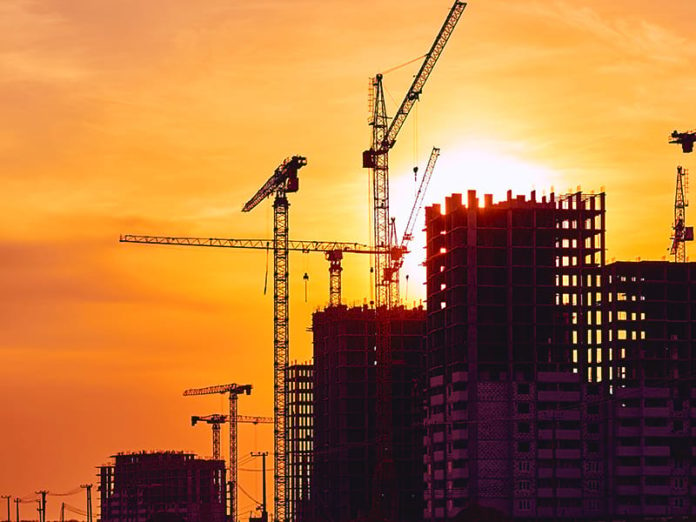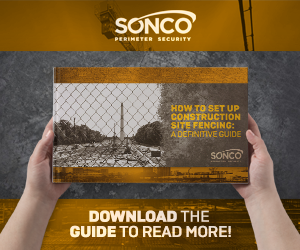Every construction site is different, but all will need to formulate new protocols during and immediately after the COVID-19 pandemic. The ultimate goal is to keep your crew safe and healthy by not exposing any workers to unnecessary risks.
One of the easiest places to start is with access to the site. Construction areas that follow best practices today will set themselves up for success tomorrow and beyond. Here are some safety tips on how to manage those entering your sites:
- 1 1. Perform Temperature Checks
- 2 2. Establish Entrances with Social Distancing Markers
- 3 3. Arrival Time Needs to Take Screening Into Account
- 4 4. Have Every Worker Answer a List of Questions
- 5 5. Keep Entry and Exit Points Separate If Possible
- 6 6. Take Into Account Deliveries, Inspections, and So On
- 7 7. Schedule Dismissals
- 8 8. Can Everyone Get Tested Before Returning?
- 9 9. Is Ongoing Testing Feasible?
1. Perform Temperature Checks
You can hire a third-party temperature screening service that tests each person before they enter your site. It’s important that the check is performed by a medical professional to ensure they’re properly tested – and that the reading is well-understood.
A temperature screening can also provide your worker with guidance on how to proceed if they do have a temperature. They may want to go directly to a hospital or monitor themselves from home. That’s another reason why a medical professional is so crucial.
If a medical professional is not feasible, look into at least getting a handheld laser temperature reader for anyone entering the site. If they have a temperature above 100.8 degrees Fahrenheit, send them home.
2. Establish Entrances with Social Distancing Markers
Because you have this initial check, workers will need to queue. And while they’re doing so, it’s especially important to maintain social distancing. If someone with a fever infects people during the screening process, it defeats the whole purpose.
Form a queue area with markers six feet apart. Cones may be enough, but novel coronavirus-specific retractable belt stanchions or barricade covers are the safest choices. This also means establishing a queueing area that takes public sidewalks and streets into account, which can get a bit challenging and brings us to our next tip:
3. Arrival Time Needs to Take Screening Into Account
It may be valuable to have different arrival times for different workers, but that may not be feasible for construction sites. If it is possible, an easy way might be to create numbered groups and have each one arrive at specific times. For example, group one should arrive at 7:15 AM, and group two at 7:30 AM.
Either way, we’re not all going to enter when the horn blows, those days are over until this pandemic is far behind us.
So, when you’re dependent on a specific schedule, you’ll want to take the screening process time into account. This can be adjusted as you learn more about the process, and the third-party screening service may have a good idea based on the size of your team. But it will take a bit for each person to enter the construction site given these new protocols.
Also Check Out The Article: How to Manage Crowds at Events After COVID-19
4. Have Every Worker Answer a List of Questions
If a worker answers yes to any of these questions, it’s best practice to send them home to quarantine:
- Do you feel sick right now?
- Are you having any trouble breathing?
- Have you traveled outside the country within the past two weeks?
- Have you been around anyone who’s exhibiting symptoms of COVID-19?
- Have you been around anyone who’s tested positive for COVID-19?
These questions can be asked at a specific checkpoint separate from the temperature check. It can also be on a custom fence screen or sign. But even if you feel your workers are aware of these concerns, it’s important that they’re asked before they enter your site every day. You can’t risk it slipping anyone’s mind and inadvertently spreading infection to other workers.
5. Keep Entry and Exit Points Separate If Possible
Keep the flow of traffic going in one direction. If they fail the screening, have a separate exit in place. If someone needs to leave the site, have them go through an access point that’s separate from the entrance. Put “NO ENTRY” or “EXIT ONLY” signs to ensure no one forgets.
If this isn’t possible, try and create a wide enough access point to maintain six feet of distance between someone exiting and someone entering.
6. Take Into Account Deliveries, Inspections, and So On
Your workers probably aren’t the only people who need to enter and exit your site. And it’s your responsibility to ensure any visitors are following best practices, including inspectors. Deliveries are likely best done outside the site to minimize unnecessary occupancy. If they do need to enter, try to make the delivery personnel’s contact with your crew as minimal as possible.
7. Schedule Dismissals
Having different groups of workers arrive at specific times is even easier to implement at the end of the day. Rather than dismiss everyone at once, have each worker leave one at a time.
This is especially useful when workers need to collect belongings before heading out. A cluster of people grabbing personal items and then leaving is an unnecessary gathering that can increase the likelihood of COVID-19 spread.
Read Too: Crowd Control For Stores: The Retail’s Complete Guide
8. Can Everyone Get Tested Before Returning?
If everyone can be tested before returning to work, and as close to the return date as possible, that’s the best way to ensure you’re at least starting off on the right foot. Because people who are asymptomatic can spread the virus, temperature screenings and entry questions are an imperfect deterrent. The only way to be sure is testing.
9. Is Ongoing Testing Feasible?
In the same vein, testing as often as possible is another good way to ensure workers are safe. The further down the road we get, the more accessible tests will become. Reliable antibodies testing (to see if people have already had it and have immunity) will also become more commonplace.
This doesn’t mean testing every day, but monthly or bimonthly testing would be an ideal scenario that would give you and your crew extremely valuable peace of mind. Best case scenario, you catch an infection before it spreads. Worst case scenario, you boost morale. That’s a win-win in our book.




